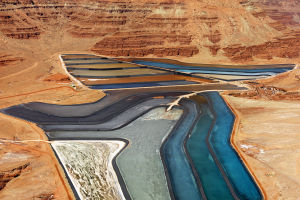Ceramics are versatile materials made from non-metallic minerals that are fired at high temperatures. They possess characteristics such as hardness, wear resistance, high-temperature resistance, and corrosion resistance, making them widely used in various fields.
Ceramic products encompass various types, including pottery, porcelain, and tiles, among others. Pottery refers to handcrafted clay objects that come in different shapes and styles, often used for artwork, tableware, and decorations.
Porcelain, on the other hand, is a high-quality ceramic product known for its fine craftsmanship, commonly used to make tea sets, bottles, and artwork. Tiles are a common building material utilized for floors, walls, and decorative purposes.
Ceramic products offer numerous advantages. Firstly, they exhibit excellent wear and corrosion resistance, ensuring durability. Secondly, ceramics possess good thermal insulation properties, making them suitable for the production of thermos cups and bottles.
Moreover, ceramic products showcase remarkable decorative qualities, allowing the creation of exquisite artworks and decorations that enhance aesthetics.
The manufacturing process of ceramics involves several steps. Initially, raw materials are mixed and crushed, then combined with water to form a slurry.
The resulting mud undergoes shaping, drying, and sintering processes to achieve the desired form and texture. Finally, the finished ceramics are glazed, decorated, and fired once again to attain the final finish.
Despite their numerous advantages, ceramics have certain limitations. Due to their fragile nature, ceramic items are prone to breaking and require careful handling and storage. Additionally, the production process of ceramic products is relatively complex, involving high temperatures and specialized equipment, leading to higher production costs.
In summary, ceramics are a versatile material extensively employed in architecture, art, catering, and decoration. Their hardness, wear resistance, and decorative qualities make them a preferred choice. However, proper usage and maintenance are necessary to ensure their durability and aesthetic appeal.
Pottery and porcelain are distinct materials with differences in their production processes, raw materials, and characteristics.
1. Crafting: Pottery is a traditional handicraft involving clay shaping, drying, and firing. It typically results in rough and opaque products with a natural texture on the surface.
Porcelain, on the other hand, undergoes a highly industrialized manufacturing process that utilizes refined china clay or stones. The outcome is characterized by smooth, fine, and translucent surfaces.
2. Raw materials: Pottery clay consists mainly of clay and mineral particles, often containing higher levels of iron oxides and impurities. These impurities contribute to the natural color and texture of pottery clay.
Conversely, china clay is a high-purity clay with minimal impurities. It undergoes meticulous processing and screening, resulting in a purer and more homogeneous composition.
3. Characteristics: Due to differences in production processes and raw materials, pottery and porcelain exhibit distinct characteristics. Pottery products tend to be rough, thick, and relatively fragile, yet possess high wear resistance.
Porcelain products, in contrast, are finer, lighter, and feature greater strength and hardness, but they are also more brittle. With its higher sintering temperature, porcelain demonstrates superior heat and corrosion resistance.
Pottery and porcelain differ in their production processes, raw materials, and characteristics. Pottery is often handcrafted using rough clay, resulting in rough and opaque products.
Porcelain, on the other hand, undergoes a highly industrialized process using refined china clay, producing smooth, delicate, and translucent products. Both pottery and porcelain possess unique aesthetics and find applications in art, catering, decoration, and other fields.


